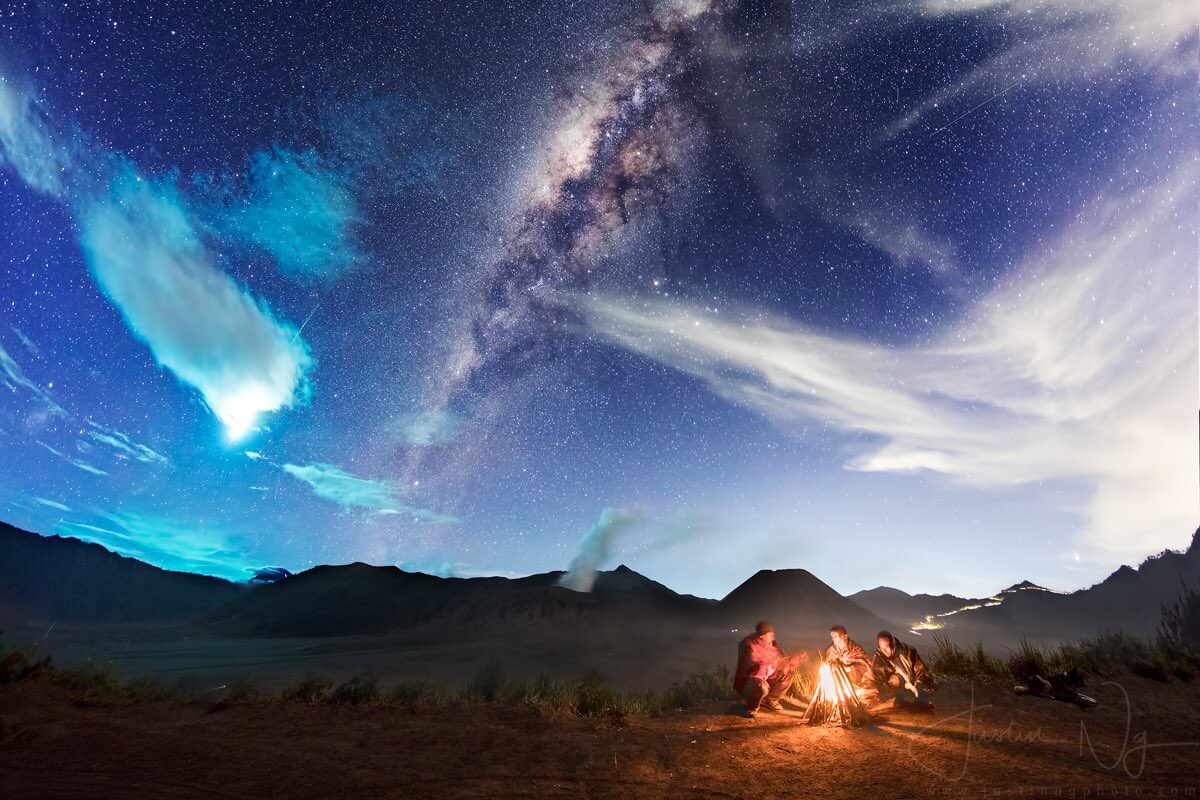An Eta Aquarid meteor captured on video by astrophotographer Justin Ng shows an amazing explodingred meteor and what is known as a persistent train — what remains of a meteor fireball in the upper atmosphere as winds twist and swirl the expanding debris.
The meteor pierced through the clouds and the vaporized “remains” of the fireball persisted for over 10 minutes, Justin said. It lasts just a few seconds in the time-lapse.
Here’s the video:
Justin took this footage during an astrophotography tour to Mount Bromo in Indonesia, where he saw several Eta Aquarid meteors. The red, explody meteor occurred at around 4:16 am,local time. The Small Magellanic Cloud is also visible just above the horizon on the left.
Eta Aquarid meteor piercing through cloud and left behind a red smoke trail that lasted for over 10mins. Taken in Mt. Bromo 8hrs ago. pic.twitter.com/WtFl9TGRbj
— Justin Ng (@justinngphoto) May 6, 2017
Persistent trains occur when a meteoroid blasts through the air, ionizes gases in our atmosphere. Until recently, these have been difficult to study because they are rather elusive. But lately, with the widespread availability of ultra-fast lenses and highly sensitive cameras, capturing these trains is becoming more common, much to the delight of astrophotography fans!
Mount Bromo, 2,329 meters (7600 ft.) high is an active volcano in East Java, Indonesia.
Check out more of Justin’s work at his website, on Twitter, Facebook or G+.
6 May 2017 – Eta Aquarid Captured at Mount Bromo (4K Timelapse) from Justin Ng Photo on Vimeo.


Hmm.. Rubidium burns Red/Purple red. Lithium burns deep pink to dark red. Potassium burns light purple to dark red. And finally Calcium burns orange-red.
Comets are basically composed of different combinations of Ice and dust with methane, ammonia and CO2 with trace elements and sometimes hydrocarbons. Methane burns blue and yellow. Ammonia yellowish.
Since Rubidium, Lithium and calcium are rare in meteors.. that leaves Potassium, Methane and Ammonia to create a chemical reaction in the ozone?